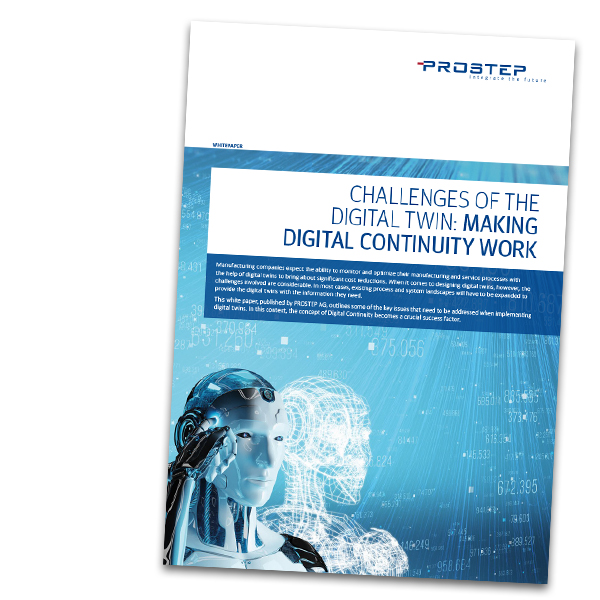
|
|
PROSTEP has published a white paper covering a number of important aspects to consider when implementing a Digital Twin. These include what information should be included in these twins, how they can be structured, and what role cloud and platforms play for Digital Twin applications. The white paper underlines the importance of digital consistency. 
PROSTEP has published a white paper covering a number of important aspects to consider when implementing a Digital Twin. These include what information should be included in these twins, how they can be structured, and what role cloud and platforms play for Digital Twin applications. The white paper underlines the importance of digital consistency. The forms of the Digital Twin are as different as the various products that the manufacturing industry produces. As different as the business models on the market are, as diverse are the information required in the Digital Twin. For many Digital Twin concepts, it is very important to combine production information with information from the current use of the product. In the best case scenario, the service technician of the elevator optimized by predictive maintenance mechanisms is already provided with the parts list of the parts actually installed in this elevator instance in the service center. But product development also wants to participate in the Digital Twin. Unusual accumulations of faults in certain components are to be eliminated quickly during the further development of the product. Skilful use of this feedback has the potential to directly improve product quality and to reduce service costs, which are particularly relevant for manufacturers with "as a service" concepts, more quickly. In order to fully exploit the potential of the Digital Twin, a digital end-to-end process chain must be created that provides the right information in the Digital Twin reliably, quickly and automatically. A particular challenge for the Digital Twin is that the required data must come from a wide variety of sources. During the usage phase, the status data is ideally available via an IoT solution. However, production data relating to the specific product instance may also be required. Ideally, one would also like to be able to access information from product development. These areas are characterized by a multitude of information systems and are themselves under strong pressure to change, which is characterized by the topics Systems Engineering, Industry 4.0 and Industrial IoT. 
|
|
| © PROSTEP AG | ALL RIGHTS RESERVED | IMPRESSUM | DATENSCHUTZERKLÄRUNG | HIER KÖNNEN SIE DEN NEWSLETTER ABBESTELLEN. |

